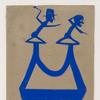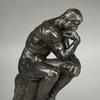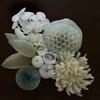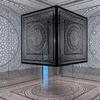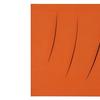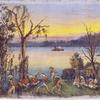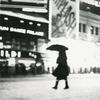'Alice Neel: Collector of Souls' Traveling Exhibition Opens Saturday in the Netherlands
- THE HAGUE, Netherlands
- /
- November 01, 2016
“I have this overweening interest in humanity. Even if I’m not working I’m still analysing people.” – Alice Neel
American artist Alice Neel (1900-1984) was above all a portrait painter or, as she herself put it, a ‘collector of souls’. She painted the people around her, from her children and lovers to MoMA curator Frank O’Hara, fellow artists and the flamboyant characters associated with Andy Warhol’s Factory. Her style not only captured the outward appearance of her subjects, but also their mood, their inner uncertainty or private vanity. Neel is now regarded as one of the most important painters of the twentieth century and a source of inspiration for contemporary artists, including Marlene Dumas, Rinus Van de Velde and Elizabeth Peyton. Nevertheless, she remains relatively unknown in the Netherlands. The Gemeentemuseum hopes to change this by staging the first major retrospective of her work in the Netherlands, from Nov. 5, 2016 to Feb. 12, 2017.
A turbulent life, a changing world
Alice Neel’s expressive portraits tell us something not only about the subjects, but also about the artist herself and the tumultuous life she led. The exhibition begins in 1926, when she and her husband Carlos Enriquez were living in Cuba. After their first daughter died at the age of one, the couple separated and Neel returned to her parents in Philadelphia, leaving their second daughter with Enriquez’s family in Cuba. Neel suffered a nervous breakdown and was admitted to a psychiatric hospital.
In 1932 she moved to New York. Living in ‘bohemian’ Greenwich Village, she became part of a circle of artists and writers who responded to the Great Depression by becoming interested in Communism. In 1935, Neel herself became a member of the Communist Party. This aspect of her life attracted the interest of the FBI. When she moved to Spanish Harlem, she began to paint the immigrants from Latin America and Puerto Rico who populated the neighbourhood, as well as continuing to produce portraits of her Communist friends. Spanish Harlem was also where she gave birth to her two sons (by José Negron and Sam Brody respectively), who subsequently became regular subjects of her portraits.
In the early 60s Neel moved to the more prosperous Upper West Side of New York, where her subjects began to include influential curators, art critics and dealers. At the same time, she became interested in the subcultures that were beginning to lay claim to their position in society around this time. Thanks to her friendship with Andy Warhol, she met various gays and transsexuals, including Jackie Curtis (inspiration for Lou Reed’s song Walk on the Wild Side). Neel’s portraits of Curtis and of ‘liberated’ women contributed to the public acceptance of such subcultures. In this respect, her oeuvre includes a genre familiar to us from the world of photography – for example, that of Diane Arbus – but unique in painting. By the end of her life, Alice Neel had created a body of portraits that, taken together, represented a cross-section of 20th-century American society.
Recognition
Alice Neel was a figurative painter at a time when the art world was dominated first by Abstract Expressionism and later by Minimal Art and Pop Art. Figurative painting was regarded as a thing of the past. Indeed, in the 1960s and ’70s painting itself was declared dead. Although she was well aware of contemporary trends, Neel chose to pursue a path diametrically opposed to them. Consequently, her life was a constant struggle for artistic recognition. She did not achieve broader recognition until the 1970s, and then partly due to the women’s liberation movement. In the United States she is now ranked as one of the most important figurative painters of the 20th century, alongside Lucian Freud and Francis Bacon. In Europe, interest in her work has increased sharply in recent years and this exhibition can be seen as the culmination of her posthumous artistic breakthrough on this side of the Atlantic.
Publication and film
The exhibition is accompanied by a catalogue entitled Alice Neel - Portret van het Moderne leven, containing texts by Jeremy Lewison (ed.), Bice Curiger, Petra Gördüren, Laura Stamps and Annamari Vänskä. (Mercatorfonds, ISBN 978-94-6230-136-8)
The wonderful documentary about her turbulent life made by the artist’s grandson, Andrew Neel, will be broadcast on NPO2’s Het Uur van de Wolf at 22.55 on Thursday 10 November.
Collaboration
The show is curated by Jeremy Lewison and was previously presented at the Ateneum Art Museum (part of the Finnish National Gallery) in Helsinki. From The Hague, it will go on to Fondation Vincent van Gogh Arles and the Deichtorhallen in Hamburg.
The exhibition has benefited from Dutch government support in the form of an indemnity guarantee awarded by the Cultural Heritage Agency of the Netherlands on behalf of the Minister of Education, Culture and Science and the Minister of Finance.


